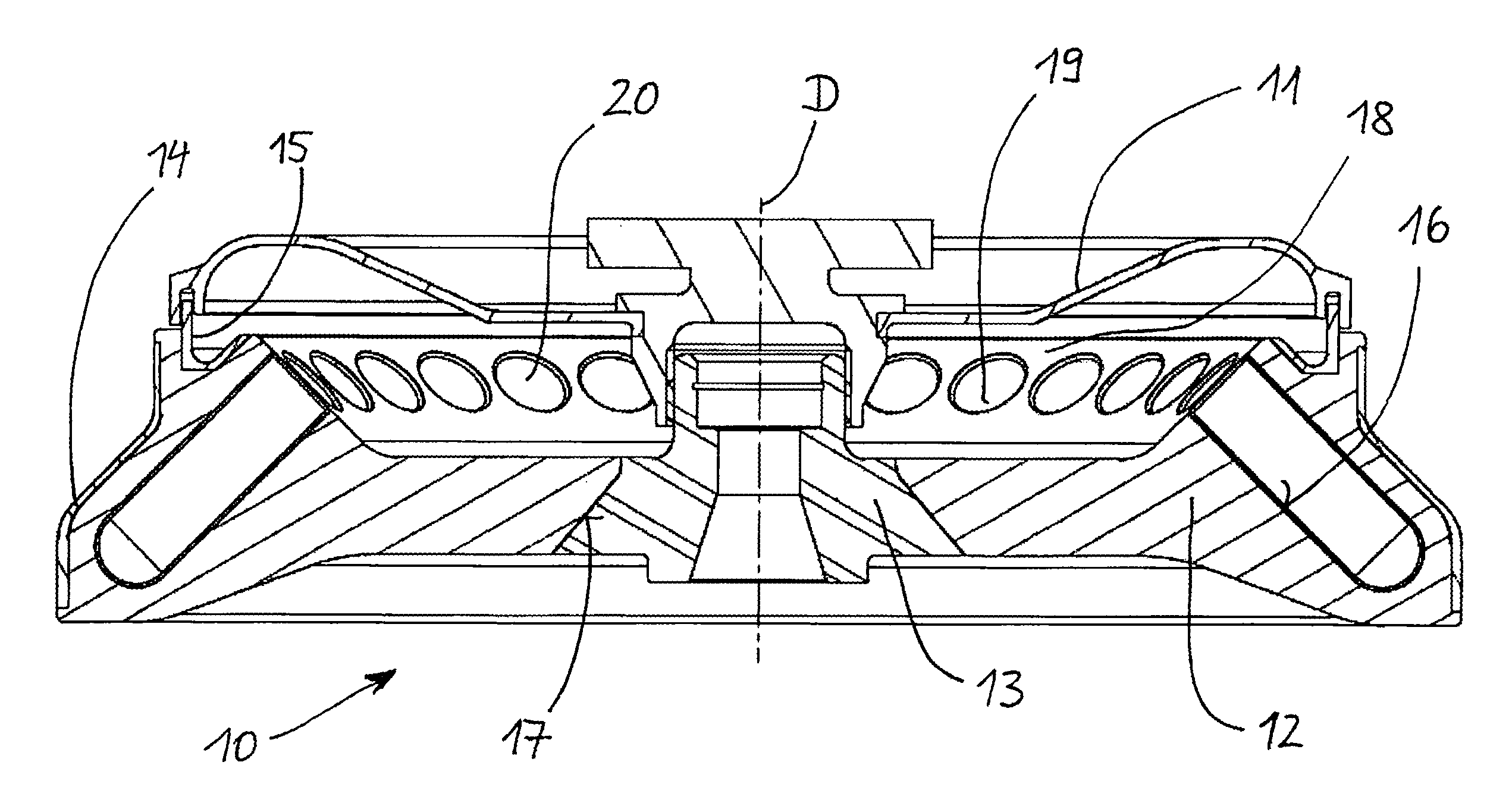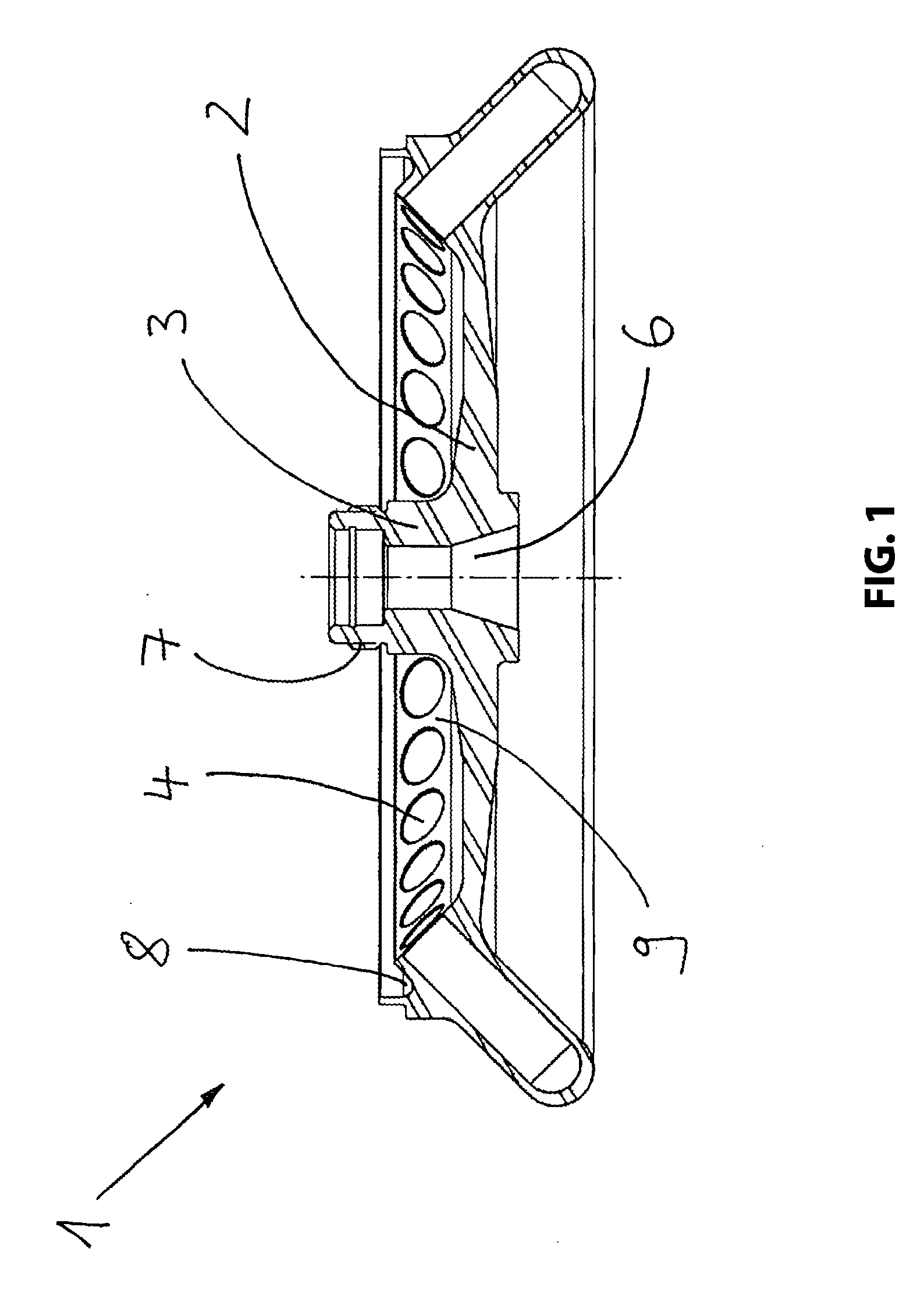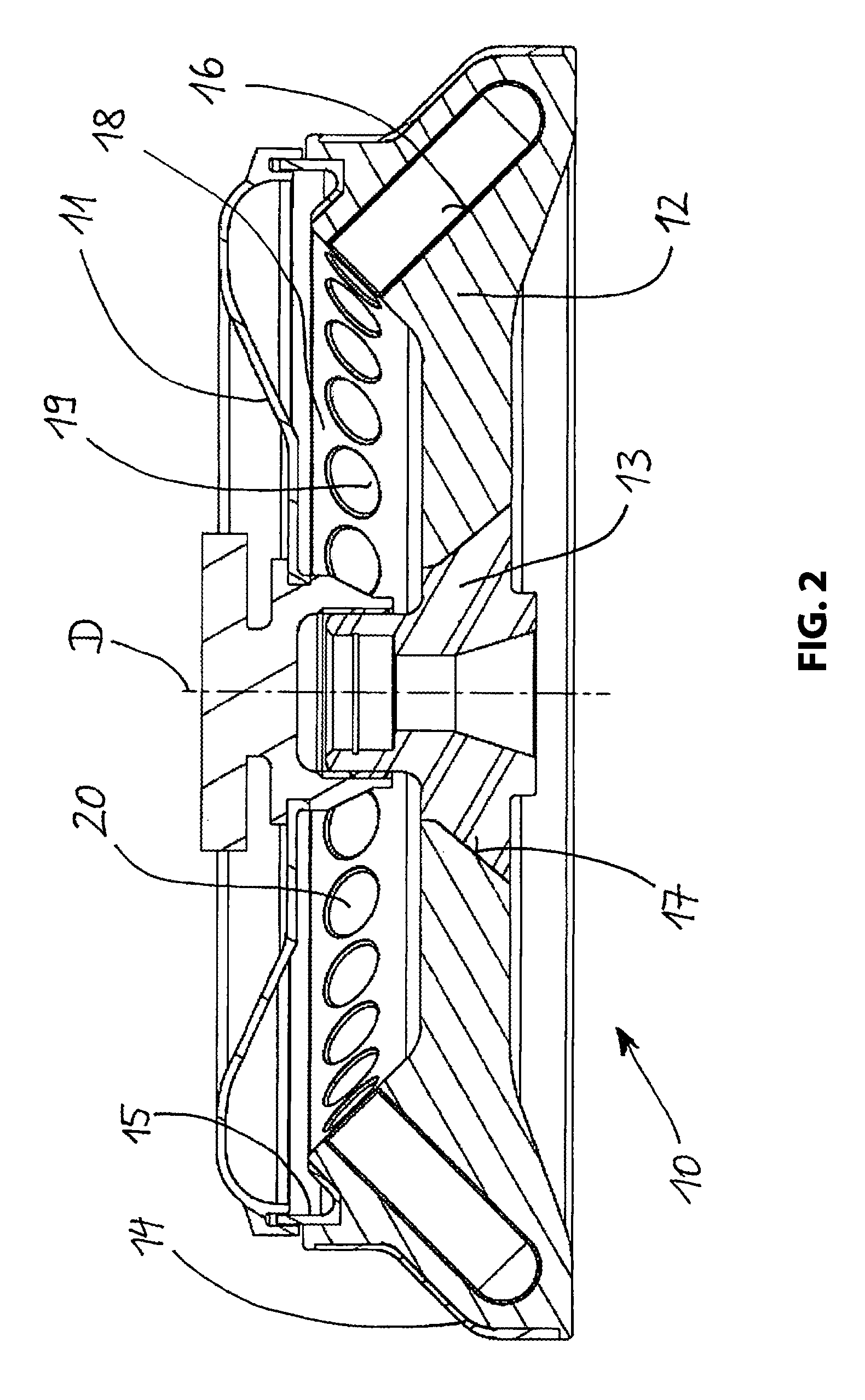Centrifuge rotor
a centrifuge rotor and centrifuge technology, applied in centrifuges and other directions, can solve the problems of unattainable essential increase of the maximum rotational speed and the weight of these rotors, and achieve the effect of relieved rotor body from strain and high strength
- Summary
- Abstract
- Description
- Claims
- Application Information
AI Technical Summary
Benefits of technology
Problems solved by technology
Method used
Image
Examples
Embodiment Construction
[0027]FIG. 1 illustrates a known centrifuge rotor 1 including a rotor body 2 made of a solid metal, usually aluminum. Around a rotational axis the rotor body 2 includes a hub portion 3, and in radially outer portions receiving sections 4 for samples to be centrifuged are provided. The hub portion 3 includes tapped holes (not shown) for identifying the centrifuge rotor. Further, a receiving section 6 for arranging the centrifuge rotor 1 at the drive unit of a centrifuge is provided in the hub portion 3, and above the receiving sections 4 the hub portion 3 includes a thread 7 for non-positive connection of the centrifuge rotor 1 with a centrifuge lid not shown. This centrifuge lid can engage a recess 8 in a form locking and friction locking manner to seal the centrifuge space 9 in an aerosol-tight manner.
[0028]FIGS. 2 to 4 schematically illustrate the centrifuge rotor 10 according to a first advantageous embodiment of the present invention, wherein FIG. 2 is a sectional view schematic...
PUM
 Login to View More
Login to View More Abstract
Description
Claims
Application Information
 Login to View More
Login to View More - R&D
- Intellectual Property
- Life Sciences
- Materials
- Tech Scout
- Unparalleled Data Quality
- Higher Quality Content
- 60% Fewer Hallucinations
Browse by: Latest US Patents, China's latest patents, Technical Efficacy Thesaurus, Application Domain, Technology Topic, Popular Technical Reports.
© 2025 PatSnap. All rights reserved.Legal|Privacy policy|Modern Slavery Act Transparency Statement|Sitemap|About US| Contact US: help@patsnap.com



